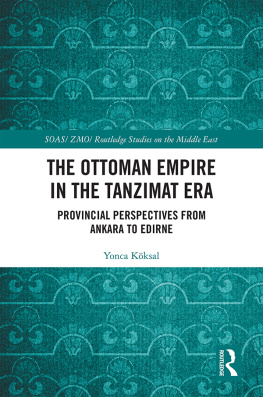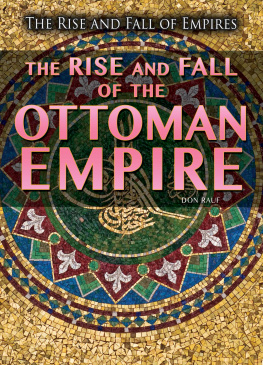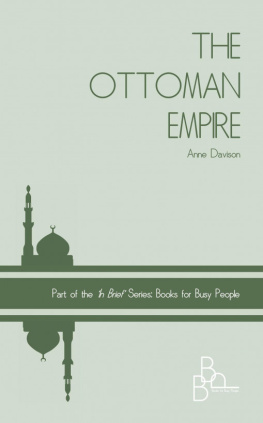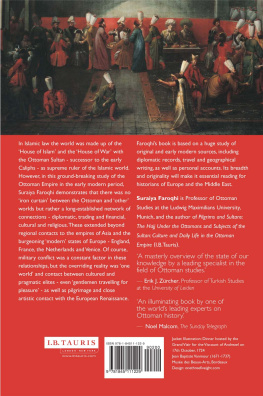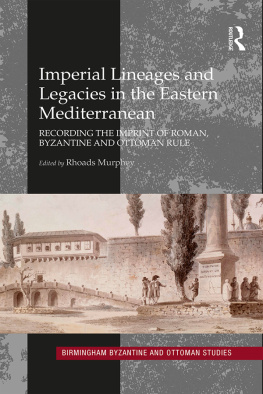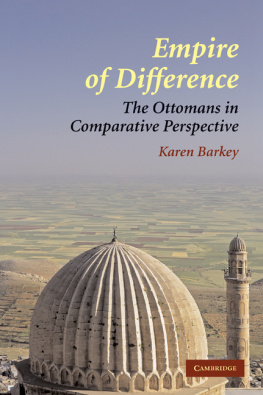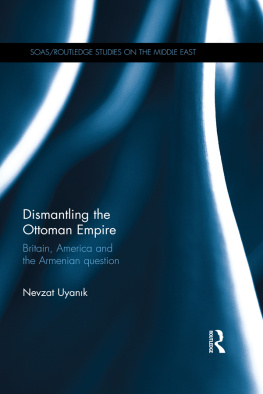Imperial Resilience

The publisher and the University of California Press Foundation gratefully acknowledge the generous support of the Fletcher Jones Foundation Imprint in Humanities.
Imperial Resilience
THE GREAT WARS END, OTTOMAN LONGEVITY, AND INCIDENTAL NATIONS
Hasan Kayal

UNIVERSITY OF CALIFORNIA PRESS
University of California Press
Oakland, California
2021 by Hasan Kayal
Library of Congress Cataloging-in-Publication Data
Names: Kayal, Hasan, author.
Title: Imperial resilience : the Great Wars end, Ottoman longevity, and incidental nations / Hasan Kayal.
Description: Oakland, California : University of California Press, [2021] | Includes bibliographical references and index.
Identifiers: LCCN 2021014322 (print) | LCCN 2021014323 (ebook) | ISBN 9780520343696 (cloth) | ISBN 9780520343702 (paperback) | ISBN 9780520975101 (epub)
Subjects: LCSH: TurkeyHistoryMehmed VI, 19181922. | TurkeyHistory19181960.
Classification: LCC DR589 .K355 2021 (print) | LCC DR589 (ebook) | DDC 956.1/023dc23
LC record available at https://lccn.loc.gov/2021014322
LC ebook record available at https://lccn.loc.gov/2021014323
Manufactured in the United States of America
30 29 28 27 26 25 24 23 22 21
10 9 8 7 6 5 4 3 2 1
Dedicated to the memory of my parents, Mihriver and Reid Kayal
Contents
Maps
Acknowledgments
I owe a special debt to Kathy Hodges and Peter Thomas for making this book possible. To them and colleagues in the History Department at UC San Diego and beyond I thank for their amity, interest in my work, and support, among them Abdul-Rahim Abu-Husayn, Feroz Ahmad, Frank Biess, Bill Blair, Bob Edelman, Leila Fawaz, Ali Gheissari, Ryan Gingeras, Rachel Klein, Philip Khoury, the late John Marino, Uli Strasser, and Bob Westman. Michael Provence extended assistance and moral support at every stage.
I thank the staffs of Geisel Library, especially Interlibrary Loan, the ATASE Military Archives (Ankara), the British National Archives (Kew Gardens), the Prime Ministry Archives (Istanbul), and the French Ministry of Defense Archives (Vincennes). I have been the beneficiary of research grants from the UC San Diego Academic Senate and the Institute of Arts and Humanities and the University of California Presidents Research Fellowship in the Humanities.
Niels Hooper, executive editor at the University of California Press, deftly shepherded this book. I thank him and his staff, especially Enrique Ochoa-Kaup. Bill Nelson produced the maps. Wolf-Dieter Lemke generously shared the cover images from his private archive. Gary Hamel copyedited the manuscript.
I am deeply grateful to Aye for her unfailing kindness and selfless patience in all my endeavors, and to Murat and Nihal for their steady wisdom and filial devotion.

MAP 1. The Ottoman Empire after the Balkan Wars (1913)
Preface
The beginnings of this project go back to a time when its geographical focus at the convergence of Turkey, Syria, and Iraq was remote from public consciousness. The region has become more recently a staple of international news owing to conflagrations of civil and military conflict, especially in relation to the civil war in Syria and the rise and expansion of the Islamic State political enterprise. The studys substantive concern and chronological focus are removed from the regions recent predicaments. It investigates the northern tier of the Ottoman Middle East one hundred years ago. Even as the events of the twenty-first century, many shaped by transnational actors and ideologies, have destabilized the entrenched certainties of nations and nationalism, nation-centric assumptions color the portrayals of the region over the last century. Histories have tended to presuppose nationness in this period and read it back to World War I and its immediate aftermath, notwithstanding deep ambiguities and competing allegiances, identities, and political projects. The book attempts an alternative reading of the history of this epoch, with a focus on Turco-Arab disengagement within the framework of the drawn-out exit of the Ottoman Empire from the historical stage.
As objects of intense scrutiny and deconstruction, nation and nationalism have been divested of their certitudes in recent decades. Deconstructing nationalist narratives does not displace the entrenched formulations, which intellectual and political elites of the twentieth century produced in particular contexts. They remain well and alive in day-to-day practice, school textbooks, the popular press, and political discourse, especially in those Middle Eastern countries where the social composition of the elites and state institutions have remained stable. Middle East scholars have brought nuance and clarity to the understandings of the political community in the region, including Examining the Arab provinces from the vantage of the imperial government in Istanbul, I argued that nationalism did not become the defining political current at the state level or the predominant collective identity of the empires non-Christian constituent groups.
There has been less scrutiny, however, of the empires twilight years, particularly the tumultuous interlude from 1918 to 1923, outside the nation-state paradigm, which presumes that ethno-regional nationalism emerged in Middle Eastern societies by default upon the debacle of Ottoman defeat in the Great War. The aim of this study is to explore the tortuous path toward the advent of nation-states in the northern tier of the empire against the background of continued armed conflict from the end of World War I into the 1920s and, in particular, the alternative concomitant political projects and collective identities that presented themselves from within the region.
Ottoman state legitimacy and institutions, including boundaries, were severely tested and undermined under the duress of wars that afflicted the Ottoman Middle East from 1911 to 1922. The book focuses on the second half of this period in a liminal region that may be defined for the contemporary reader as corresponding to southeastern Turkey, northern Syria, and northern Iraq, regions that meld into one another in terms of physical and human geography and that were sites of contestation among foreign and indigenous actors. The momentous course and processes of World War I and its aftermath in this region shaped the contours of the newly emerging states and mental and emotional maps along with political ones.
The following pages will be partial to terminology that eschews nation-state-centric designations, since the books purpose is to bring to light the flux and contestation that surrounded the crystallization of the familiar political entities and to undermine the notion of compartmentalization along alleged natural boundaries. The region of focus corresponds to the territories within the upper arc of the Fertile Crescent, a clumsy but useful term that connotes the lands stretching northward along the eastern Mediterranean coast, reaching the foothills of the eastern Tauruses in Asia Minor, and down south again to the river basins of the Euphrates and Tigris. Before the formation of states by the same names, Syria (customarily referred to as Greater Syria to distinguish it from the Ottoman province of Suriye) and Iraq signified Turkey, long used in Western accounts to refer to the Ottoman state, also denoted the geographical region corresponding to peninsular Asia Minor and its eastward extension toward the Caucasus and the mountain system flanking the Iranian plateau along its western rim. This geographical Turkey in Asia will be referred to as Anatolia.
Next page

